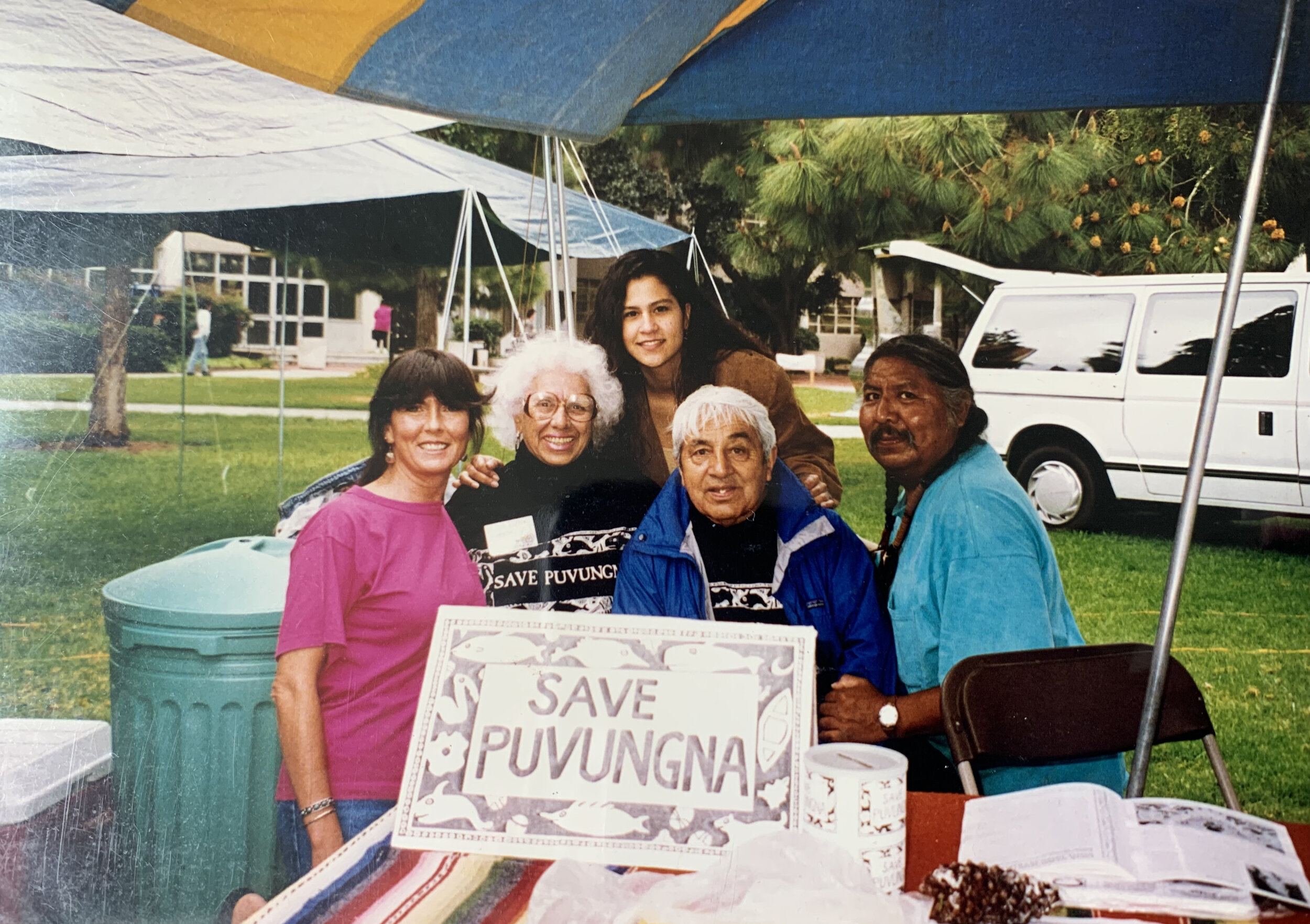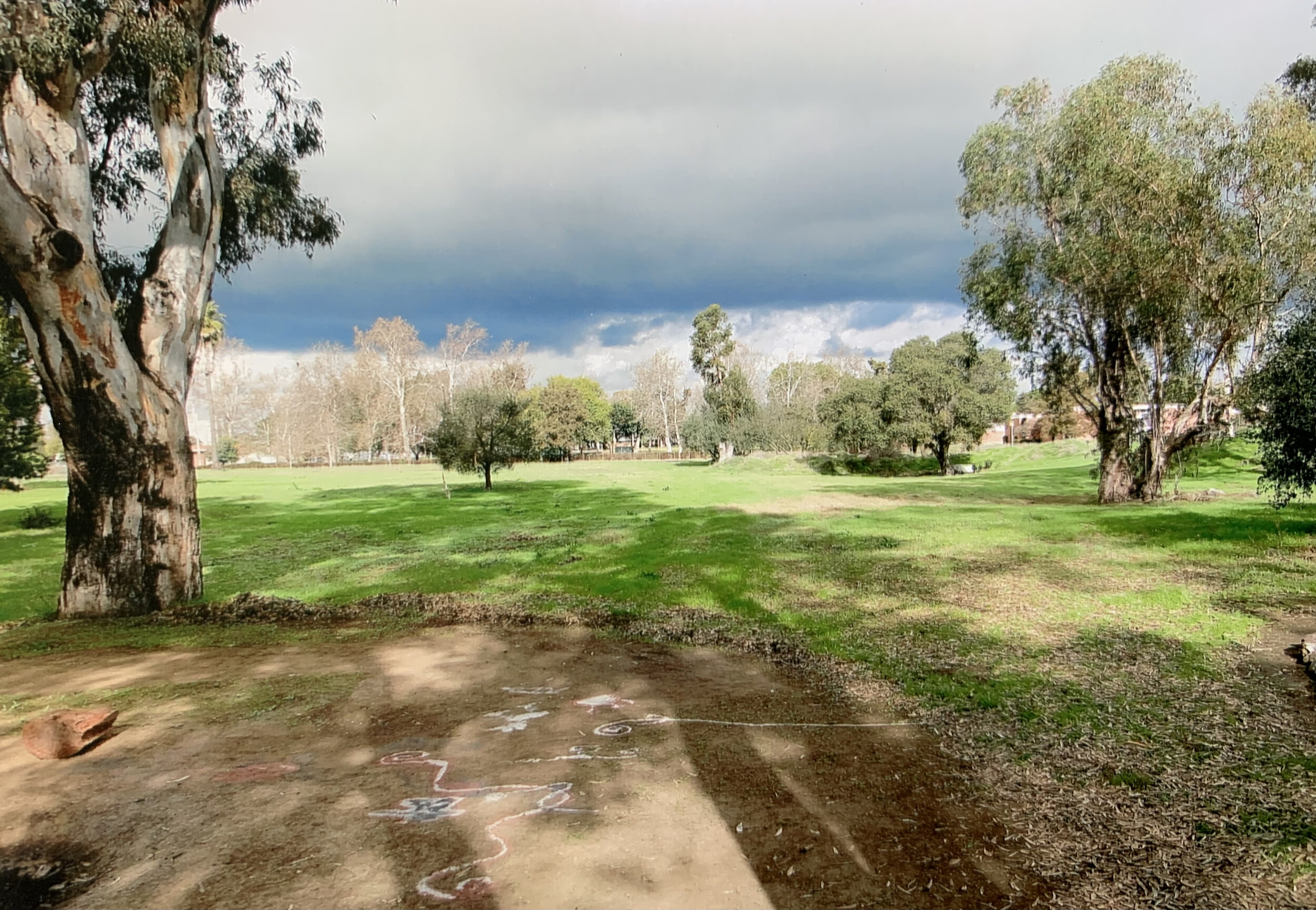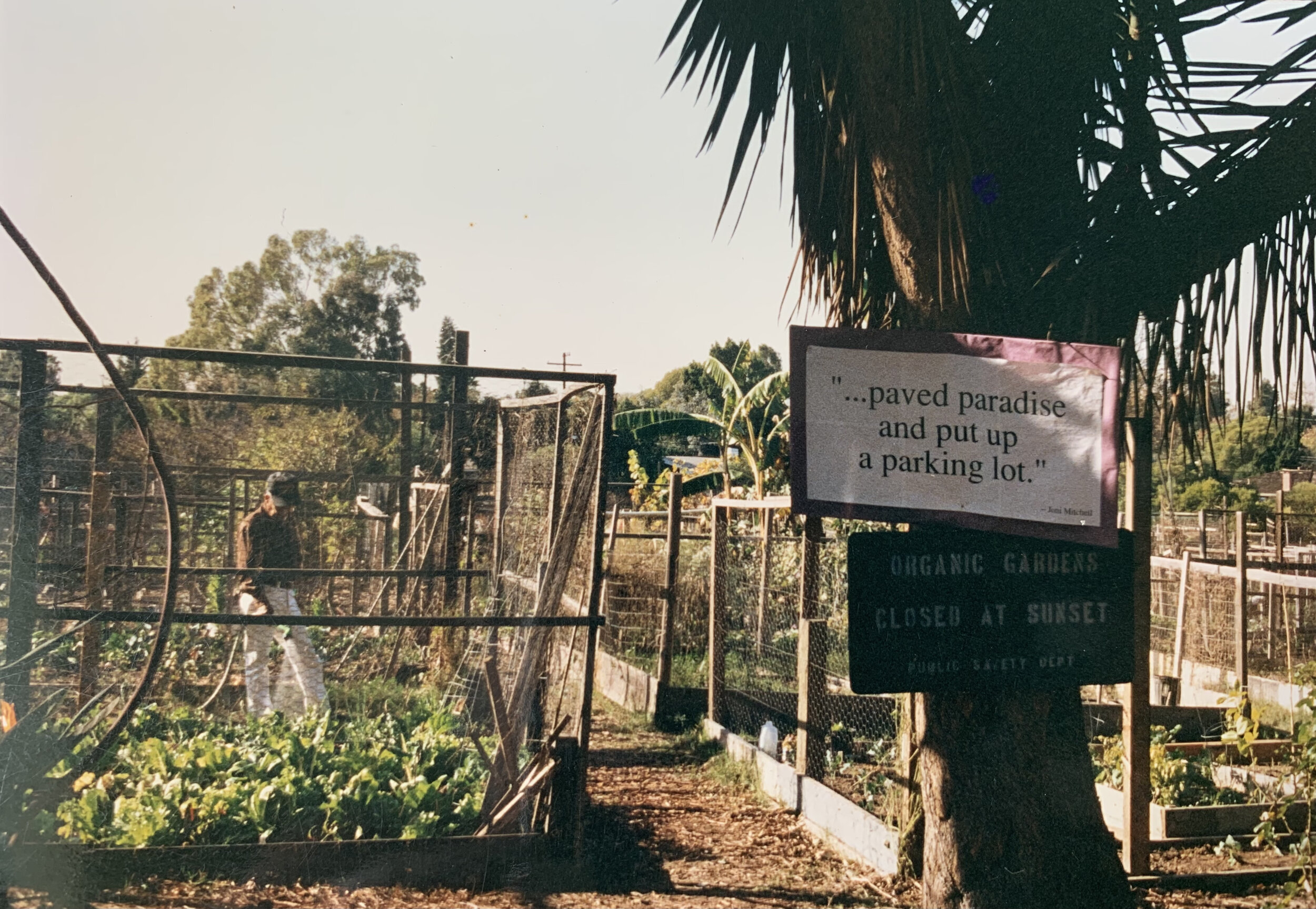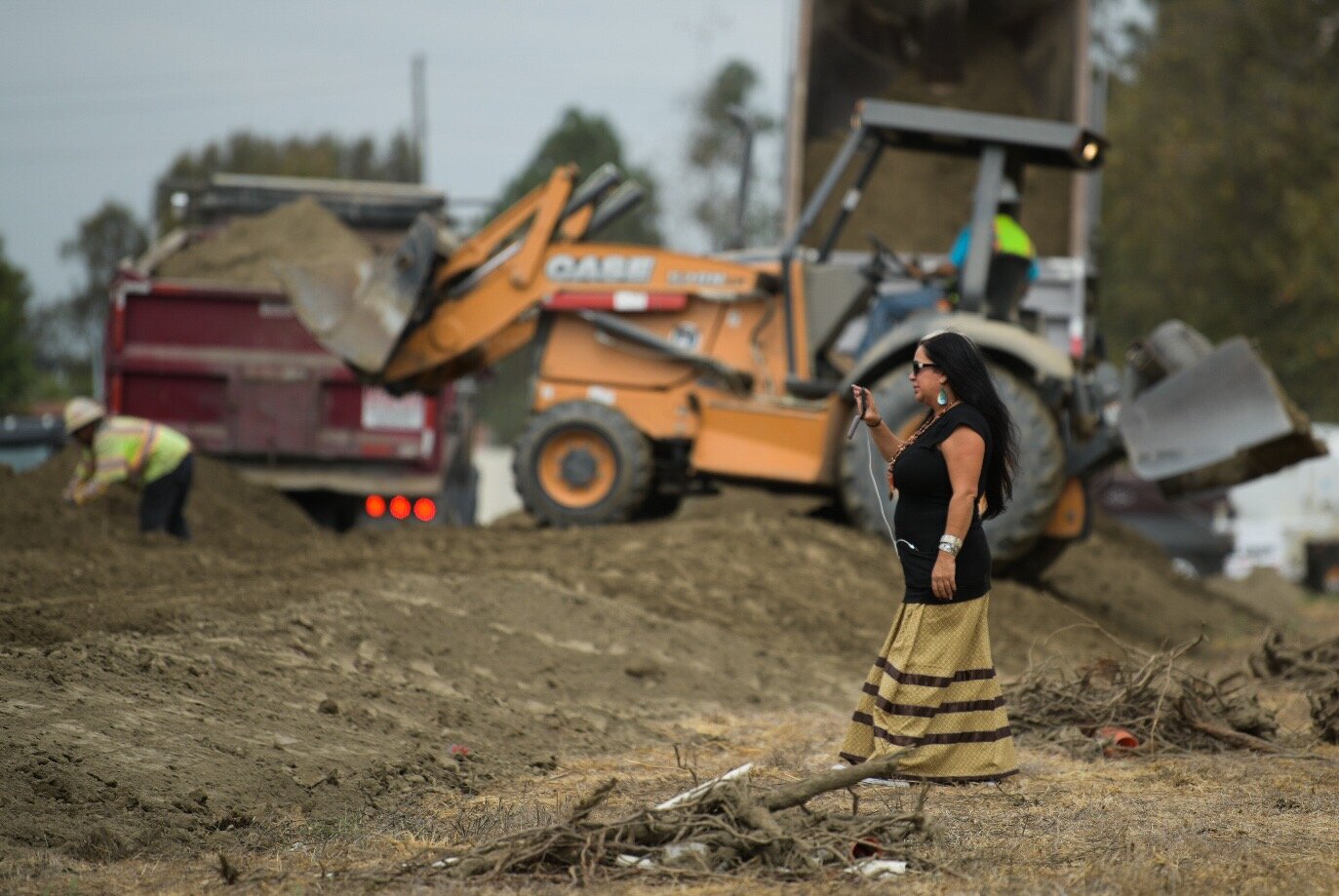“Puvungna is most sacred to the Gabrielino people, as well as to other neighboring tribes, as a spiritual center from which Chungnishnish, lawgiver and god, instructed his people. Perhaps this tradition of learning and teaching which began with our elders has yet to be understood by this university. Perhaps we, as the first people, have a knowledge of and respect for the natural ways of Mother Earth and the beings, including man, that are dependent on her, that could be of value to this university and its students. We must tell you now that to destroy what is sacred to us will not be of benefit to you or to your children, for we share the same present and future and must respect one another.”
— Chief Vera Rocha, Gabrielino/Tongva (1993)

What is Puvungna?
Located on the shared ancestral territories of the Tongva and Acjachemen nations, Puvungna is a sacred site of creation, emergence, and gathering. It is the home of the creator, Wiyot, and the birthplace of Chinigchinich, lawgiver and god. Numerous burials and important archaeological sites remain on the site.
Despite being a village of communal celebration, a place of ceremony, and the host of one the largest annual pow wows in what is now Southern California, Puvungna is also a locus of cultural contestation due to centuries of Euro-American colonization. It has become increasingly under threat in the past few decades, from parking lots to strip malls and the most recent dumping of construction debris.
Below is a detailed timeline and history of Puvungna, complete with links to relevant articles and information.
Timeline
Time immemorial - Site of creation and emergence.
Thousands of years - Puvungna exists as a village of approximately 500 acres which served as a sacred ceremonial and gathering site for Tongva and Acjachemen but also Indigenous peoples from elsewhere.
1771 - Mission San Gabriel is founded by the Spanish, using forced labor from many nearby Tongva villages.
1897 - City of Long Beach is incorporated.
1950 - Long Beach State College [now California State University, Long Beach (CSULB)] purchases the land where the campus is still located today and which includes a large portion of the historic village of Puvungna.
1970 - Organic gardens are established for the first official celebration of Earth Day on part of the remaining 22 acres of Puvungna land that has remained undeveloped and accessible.
1972 - Human burial is found at Puvungna.
1974 - Puvungna is listed on the National Register of Historic Places.
1979 - Human remains found in 1972 are re-buried on the site.
1981 - Earl Burns Miller Japanese Garden is constructed at Puvungna.
1982 - National Register of Historic Places listing increased to greater area.
1992-1994 - CSULB attempts to build the West Village Center strip mall and shopping center on the site, leading to protests, the Save Puvungna struggle (see photos below), and a lawsuit that were eventually successful in keeping any commercial buildings from being built. Unfortunately, a preliminary “temporary” parking lot was still paved over the organic gardens founded in 1970 and remains there today (G2).
1994 - Robert C. Maxson becomes President of CSULB and pledges to preserve Puvungna as open space for as long as he is in office, which he does until leaving the position in 2006.
June 2019 - California Governor Gavin Newsom signs executive order formally apologizing to California’s Native Americans for historical mistreatment, violence, and neglect, establishing a Truth and Healing Council to provide Native Americans a platform to work collaboratively with the state to begin the healing process.
September 2019 - CSULB dumps roughly 6,400 cubic yards of construction debris and soil from an on-campus student housing project to Puvungna without proper consultation with its tribal stakeholders, as previously agreed upon. The university also sprayed pesticides on the meadow and drove heavy equipment over ceremonial areas on the site.
October 2019 - The Juaneño Band of Mission Indians, Acjachemen Nation - Belardes and the California Cultural Resources Preservation Alliance (CCRPA) file a lawsuit against the university for the unauthorized dumping of construction materials on Puvungna, asking that the university provide proper options to clean up the debris, permanently protect the land, and ensure adequate consultation in the future.
August 2020 - The California Office of Historic Preservation issues a letter criticizing CSULB for damaging Puvungna.
January 2021- CSULB President Jane Close Conoley shares a message about “the land commonly referred to as Puvungna.” Conoley insists purported plans to build an additional parking lot on the site were untrue.
March 2021 - Report finds that CSULB did indeed have plans to build another parking lot on Puvungna, with initial “intentions to compact the dirt and use it as a foundation for the 500-spot temporary gravel parking lot.”
March 2021 - Joint letter from a number of organizations and tribal nations is sent to Governor Gavin Newsom, calling on him to act to restore Puvungna.
August 2021 - The Native American Heritage Commission votes to conduct a formal investigation.
September 2021 - A settlement is reached, prohibiting the university from developing or damaging the land and allowing tribal groups to use it for their ongoing traditional activities.
April 2024 - Puvungna featured in The Guardian article about native plants and soil remediation efforts.
Ongoing - Friends of Puvungna seeks to become the official land conservancy to care for Puvungna.































